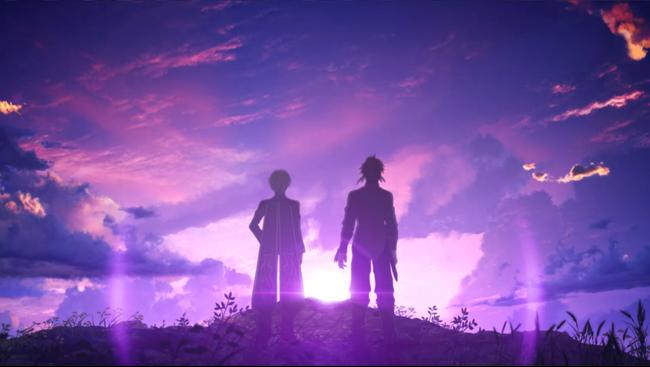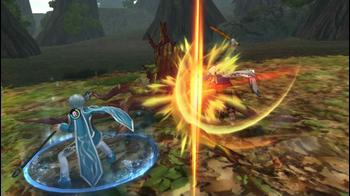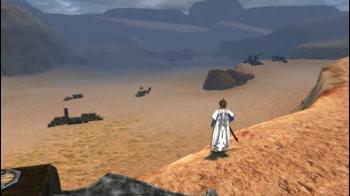Tales of Zestiria Review
After months of delay, Tales of Zestiria is finally here and in our hands – a release that many fans had expected to arrive sooner but was likely pushed back for big reasons.
Despite its PS3 roots, the game has come westward with two additional platforms in tow. PlayStation 4 and PC, in order to appeal to a fanbase who has increasingly moved on from Sony’s aging last generation platform.
It’s a huge step for the series and shows Namco has put forth a lot more effort on this particular title despite various gripes that surrounded the Japanese release.
We’re happy to say these ports hold up and now represent the definitive version of a game that’s better than what some may had you believe – even if Zestiria isn’t the best outing by any metric.

Taking place in a land not too far removed from games of Tales past, Tales of Zestiria begins in a typical fantasy world and follows the story of a young man named Sorey, who isn’t just a normal guy. Having grown up in a village of Seraphs, Sorey has the ability to see these mythical beings while normal humans cannot.
One day while exploring an ancient ruins with his childhood friend Mikleo, Sorey bumps into a girl named Alisha who sets his path in motion to travel to the world outside the village. He is to become the Shepard of legend who will guide the world toward peace from dark forces called Hellions.
The story itself ends up being fairly expected. Zestiria takes a lot of evident influences from King Arthur, but at its core it presents a very likeable cast of characters who follow the main character led by various motivations.
This is all well and good until around the latter parts of the game when things sort of fall apart. You’re left spending a lot of time doing filler content and the conclusion leaves a lot to be desired despite strong early beginnings.
But while Zestiria’s story is lukewarm, its combat system is where the game really shines.
Battles take place in an enclosed area of the map and unlike previous games in the series, battle transitions have been minimized to an extraordinary degree. Instead of traditional RPG cutaways battles in Zestiria transition into the same portion of any given map your character is currently occupying.
The big problem with this setup is a lot of the time the camera forces you into a bad spot like a wall or corner and your field of view becomes obstructed to no end. It’s annoying and probably the only big negative about gameplay for me.
Similar to Tales of Graces, mechanics here are designed around the series’ Linear Motion Battle System but with new elements.
Near the start of the game, players are given the option to fuse with other characters with “Armitization.” This stance gives players an advantage in battle with more powerful abilities, an HP pool and an increase of other stats resulting in a timed boost of abilities that allows for extra damage.
Combat is engaged by approaching enemies and monsters that persist on the field – either by an enemy tagging you, or by you smacking one with your sword first which grants a bonus. The former can result in what is known as Dangerous Encounters, which give monsters bonuses and make them become more difficult to kill.
Fighting is fluid for the most part, barring the occasional frame rate hiccup and camera mishap. Moves such as artes and side-stepping make for an importance on strategic maneuvering and attacking. Side-stepping appropriately fills what is called the Spirit Chain (SC) gauge, which can execute up to four linked attacks.
Characters also have their own unique abilities called Mystic Artes which can be triggered to deal a burst of high damage.
Zestiria places a large focus on its world — that much is evident in the game’s push toward exploration and overall map design, even if a good amount of it is left barren or repetitive features. Similar to other open world games, characters transition directly from controlled movement into cutscenes for a more seamless experience. It’s a similar setup to the game’s new battle scenes.
Along with this seamless experience, players can take advantage of unique skills that can be used to interact with certain obstacles. These skills are mapped to the d-pad and are used to ignite pillars or barriers, shield oneself from view, cross giant spaces and break objects.
Each character also has a supportive ability that can be leveled and includes things such as cooking and currency collecting. These things will happen without prompt and are noted by a character on the bottom left of your screen.
An importance is also placed on side-quests with them being a method of gaining new skills through exploration. Little creatures known as Normins are hidden throughout the land and can be given certain items in exchange for useable skills.
With Tales of Zestiria, it’s clear that Bandai Namco had big ambitions. Unfortunately they didn’t all pan out with regard to the game’s large focus on massive zones that suffer from “being big just to be big” as is becoming increasingly common in a lot of games that try for that marketing bullet point.
Despite that, both the PC and PS4 versions have really bumped the game up on a technical level. Having played the original PS3 version at Japanese launch, the game was riddled with technical issues such as framerate drops and it was just plain ugly visually. The PC and PS4 ports have brought the resolution up might higher, along with a brighter, deeper color palette and more detailed texture filtering.
Even though both ports are locked at 30FPS, the framerate remains fairly solid throughout which is definitely improved from its PS3 origins. Bandai Namco did a really great job here, all things considered.
After sitting down with Tales of Zesitira for a second time, my biggest takeaway remains its wasted potential. The battle system, characters and art direction are great – don’t get me wrong – but the story falls far short of its contemporaries.
It is certainly not as well rounded as the recent Tales of Xillia or its sequels. The camera issues and empty world are the other issues. and it’s clear the development team wanted to do more. Perhaps they just needed a bit more time.

